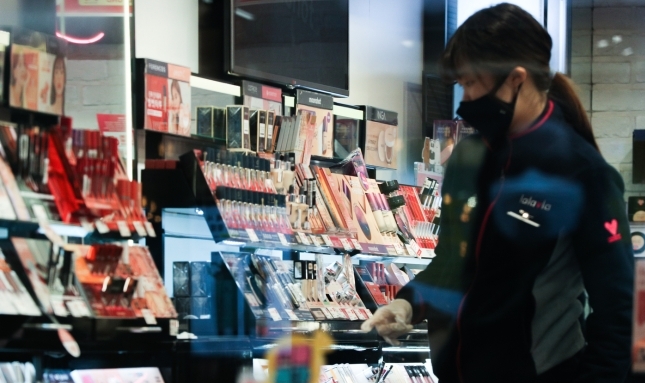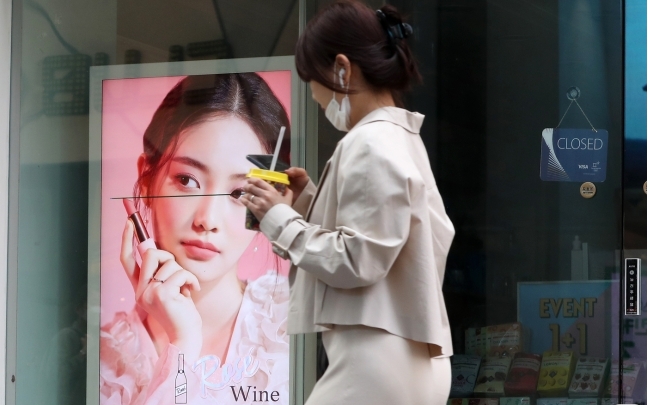From all over the world, COVID-19 outbreak changed a major lifestyle pattern throughout the industry. Experts say that it won’t be like what we used to be even after the situation is stabilized. People are making new rules by themselves to cope with everyday life, work, shopping, sport and relaxation. This is also important for the day after the pandemic, because nobody can now predict exactly when the virus is defeated, what damage will remain, especially for the economy. This means much more from a consumer market perspective. How did the pandemic change K-beauty industry which people had to buy by trying and applying it oneself?

Domestic offline sales in Korea have faced ‘Corona shock’. According to the National Association of Franchise Owners, 48.8% of the cosmetics industry franchisees said that more than half (51%) of their sales have fallen since the pandemic. Consumers are migrating to digital platforms to get more information about products without seeing things directly at offline stores. Media contents that sell offline store products using video platforms also appeared. Live shopping broadcasts that can introduce, recommend and purchase products without facing store clerks are emerging now.
Another impact from the novel virus outbreak in K-beauty industry is a drop in export and duty-free sales. Sales of brands which earned highly from China and Chinese visitors were significantly sluggish. AmorePacific Group is expected to make 1.36 trillion won in sales (-17% from the same period last year) and 55 billion won in operating profits (-73%) due to the increased fixed costs caused by the slowdown in sales in duty-free channels in Chinese and Hong Kong. AK(Aekyung) Industrial’s first-quarter sales profits are estimated at 160 billion won(-11%) and operating profits are 14 billion won(-41%).
However, LG Household & Health Care recorded its best-ever first-quarter sales. The profit of the company rose 1.2% and 3.6%, respectively, to 1.896 trillion won in sales and 333.7 billion won in operating profits, marking an “earning surprise.” Its sluggish beauty business is considered to have been offset by the areas of the household goods and beverages business. Increased sales of daily necessities stemmed from consumers’ fear against out of stock or health concerns, resulting in stockpiling of household products.

On the other hand, as the coronavirus outbreak has forced people to wear face masks all day, the K-beauty makeup trend is changing as well. Since this late January, when the spread of COVID-19 began in earnest in South Korea, masks have become a must-item for prevention. On the streets of Korea, it is hard to find people without masks. With the fear against the virus prompting citizens to wear masks, many have opted to put on light base makeup or to go makeup-free. Many are putting only sunscreen or light makeup base without foundation or concealer, as masks cover up the lower half of your face.
Smudge-proof makeup also gained popularity from people who still wear makeups under their masks. An increasing number of them opt for smudge-proof cosmetics in an effort to preserve their makeup under face masks. Influencers on social network service (SNS) guide viewers to use longwear products to avoid makeup transferring on to their masks. Only certain makeup items promise to keep makeup on the face even while wearing a mask. Hence, demand for smudge-proof makeup products has soared, according to Lalavla, health and beauty chain operated by GS Retail. According to the Lalavla, sales of lip-stain products, face powder and makeup fixers rose each 91%, 89 percent and 74 percent, respectively, in the period from February 1st compared with the same period in the previous year. Furthermore, it became an opportune time to change makeup style — especially eye-makeup. Sales in eye-makeup products also edged up.

Meanwhile, trouble care products have also increased sales. A lot of people visit clinics for skin troubles after wearing a mask. Some even coined the term “mask-trouble.” Koreans are complaining of acne, itchiness and irritation on their skin, which is caused by the moisture inside the mask: the external and internal air in a mask cannot be circulated well, which increases humidity as the moisture from breathing cannot be scattered in the air and stays around the mouth. It makes it easier for bacteria to reproduce on the skin, and increased secretion of sebum causes skin trouble. Consequentially, sales of trouble care products have increased. ‘Olive Young’, the biggest health and beauty store operated by CJ in Korea, said sales of trouble care products rose 42% between February 1st and March 4th, compared with the same period in last year. As self-care has become a trend due to the spread of untact consumption, nail self-care, hair care and bathing products have also emerged as promising products. This is because the time staying at home is getting longer without going to skin care shops or hair salons , and the trend of saving living expenses is spreading.
As it is difficult to slow down the alert for the protracted spread of the virus, it is highly likely that the changed daily life will become a new normal. This means that it is not a temporary change. A new routine may have begun. K-beauty companies now should equip the flexible ability to formulate and frequently coordinate product promotion plans that reflect changing consumption patterns and consumer sentiment in order to combat the slowdown in sales. In particular, it is necessary to focus its publicity on distribution channels that are highly exposed to consumers such as online and SNS. It is also necessary to activate e-commerce. It is necessary to respond to online sales in line with product demand and focus on securing distribution channels through e-commerce taking account of forecast demand. It should also consider working with online retailers to strengthen its existing product sales capabilities.
Kayla Hong
Asia Journal
(Los Angeles Times Advertising Supplement)



